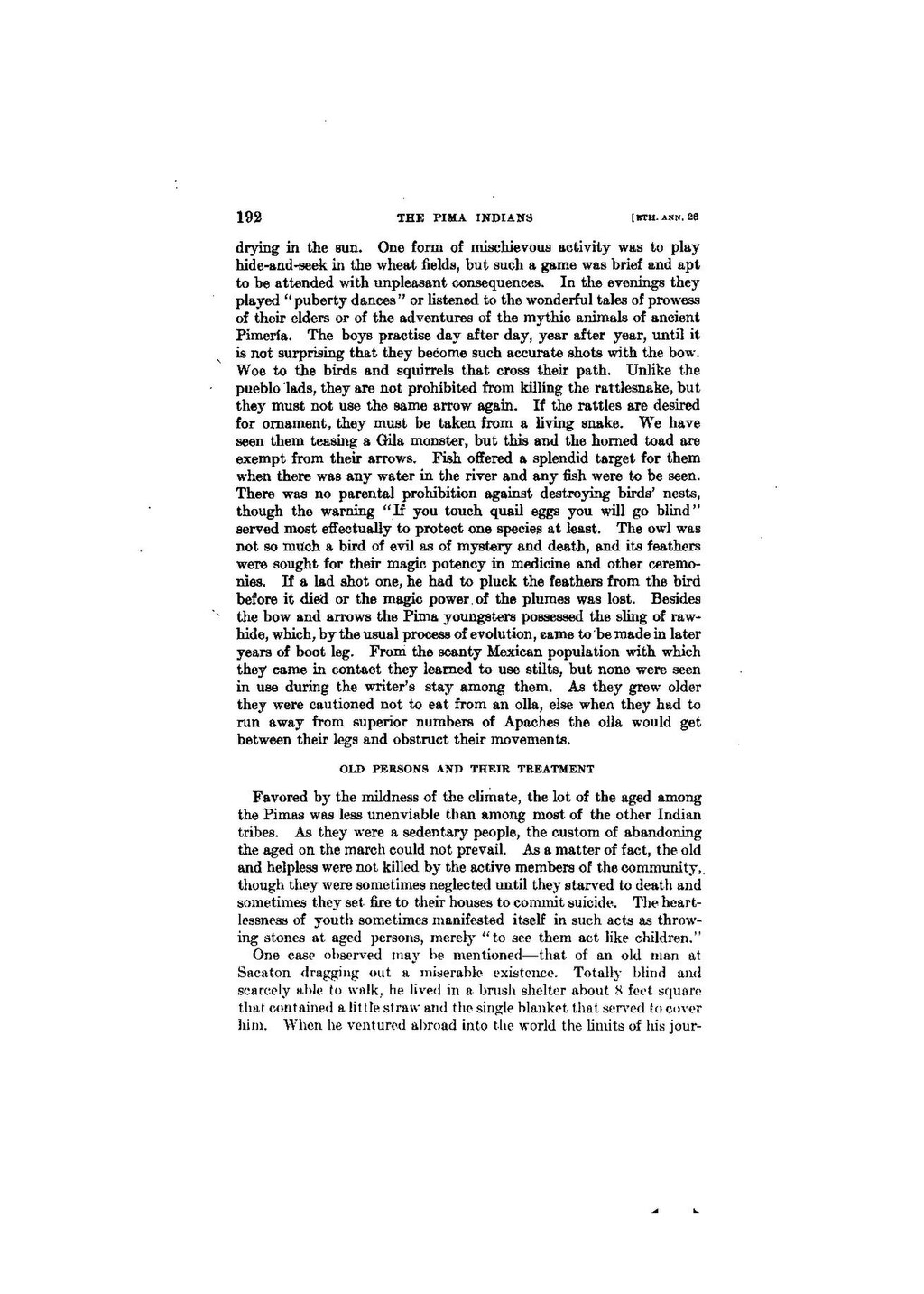drying in the sun. One form of mischievous activity was to play hide-and-seek in the wheat fields, but such a game was brief and apt to be attended with unpleasant consequences. In the evenings they played "puberty dances" or listened to the wonderful tales of prowess of their elders or of the adventures of the mythic animals of ancient Pimería. The boys practise day after day, year after year, until it is not surprising that they become such accurate shots with the bow. Woe to the birds and squirrels that cross their path. Unlike the pueblo lads, they are not prohibited from killing the rattlesnake, but they must not use the same arrow again. If the rattles are desired for ornament, they must be taken from a living snake. We have seen them teasing a Gila monster, but this and the horned toad are exempt from their arrows. Fish offered a splendid target for them when there was any water in the river and any fish were to be seen. There was no parental prohibition against destroying birds' nests, though the warning "If you touch quail eggs you will go blind" served most effectually to protect one species at least. The owl was not so much a bird of evil as of mystery and death, and its feathers were sought for their magic potency in medicine and other ceremonies. If a lad shot one, he had to pluck the feathers from the bird before it died or the magic power of the plumes was lost. Besides the bow and arrows the Pima youngsters possessed the sling of rawhide, which, by the usual process of evolution, came to be made in later years of boot leg. From the scanty Mexican population with which they came in contact they learned to use stilts, but none were seen in use during the writer's stay among them. As they grew older they were cautioned not to eat from an olla, else when they had to run away from superior numbers of Apaches the olla would get between their legs and obstruct their movements.
OLD PERSONS AND THEIR TREATMENT
Favored by the mildness of the climate, the lot of the aged among the Pimas was less unenviable than among most of the other Indian tribes. As they were a sedentary people, the custom of abandoning the aged on the march could not prevail. Asa matter of fact, the old and helpless were not killed by the active members of the community, though they were sometimes neglected until they starved to death and sometimes they set fire to their houses to commit suicide. The heartlessness of youth sometimes manifested itself in such acts as throwing stones at aged persons, merely "to see them act like children."
One case observed may be mentioned—that of an old man at Sacaton dragging out a miserable existence. Totally blind and scarcely able to walk, he lived in a brush shelter about 8 feet square that contained a little straw and the single blanket that served to cover him. When he ventured abroad into the world the limits of his jour-
